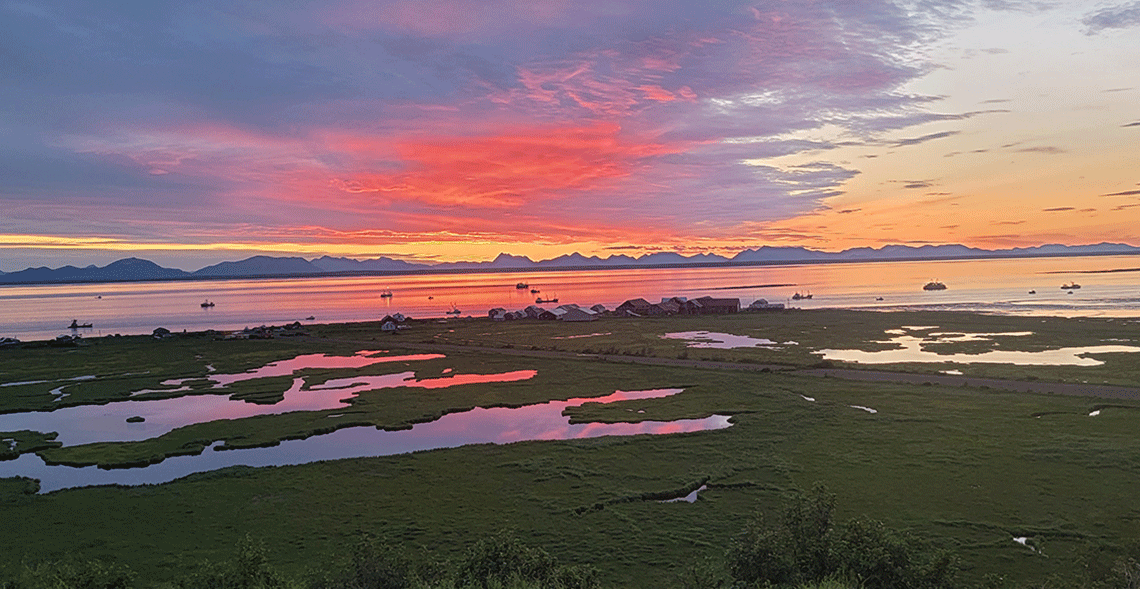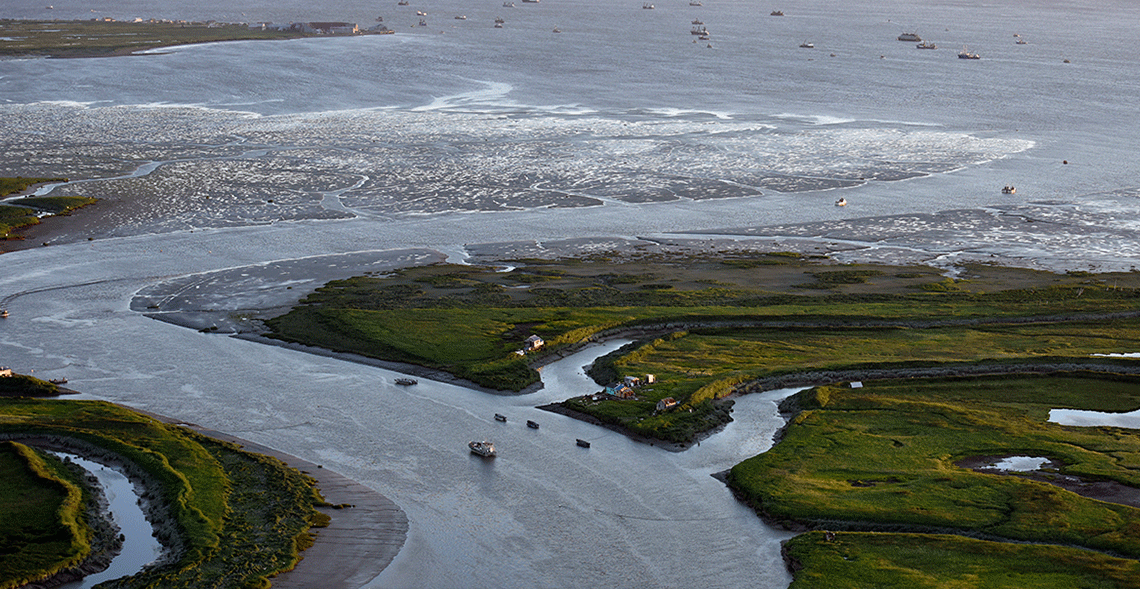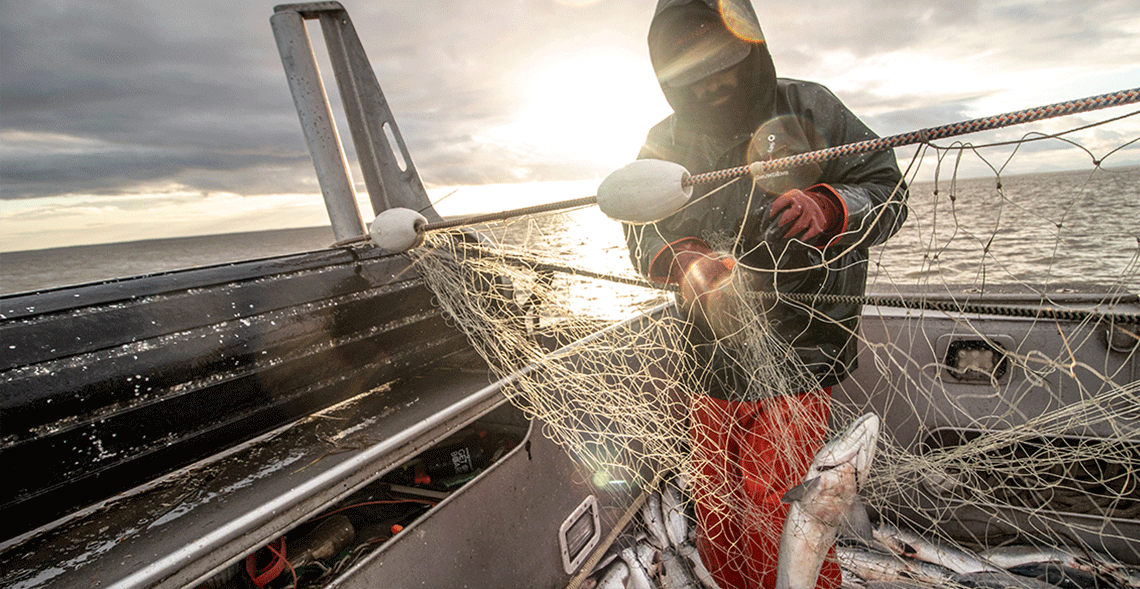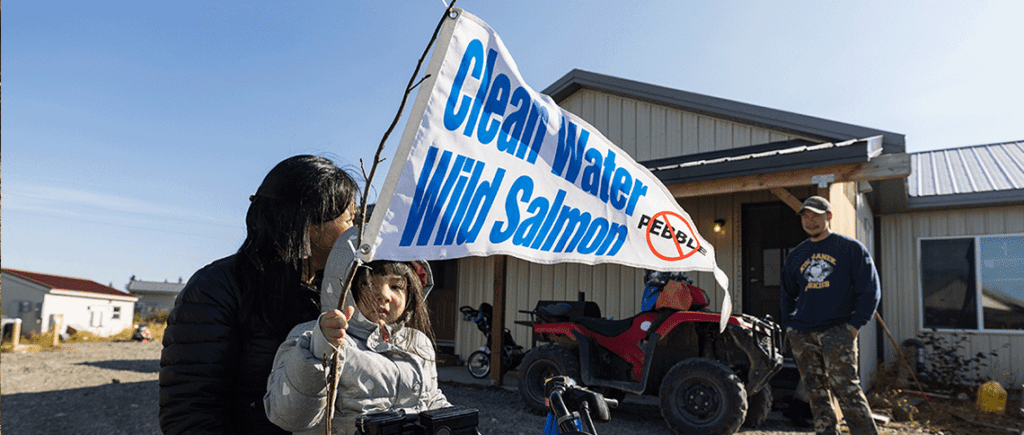Bristol Bay is the crown jewel of salmon fisheries. In a time of global climate change, threatened species and landscapes, and declining salmon populations across the Pacific Northwest and into Alaska, no place can boast the ecological abundance of Bristol Bay, Alaska. After a record breaking season of more than 66 million sockeye last summer (2021), this summer Bristol Bay anticipates a record crushing run of over 74 million sockeye.
Bristol Bay, Alaska encompasses 27.5 million acres of land and 12 million acres of marine ecosystem. The area is home to more than half a dozen major river systems, with hundreds of connected lakes, rivers, and streams that feed into a saltwater bay in the southeastern corner of the Bering Sea. Returning salmon are the keystone for a rich ecosystem that transfers marine nutrients into upstream watersheds and fuels dependent animals–ranging from small microorganisms to 1,500-pound brown bears.
The annual return of salmon, averaging over 50 million in recent years, drives commercial and sport fisheries and underpins a significant economic, nutritional, and cultural engine that supports people throughout Alaska, the United States, and the world. This wide-ranging system and associated dependent economic activities provide an annual recurring value to participants. All combined, the economic value of Bristol Bay’s wild salmon resource in 2019 exceeded $2.0 billion. Impacts occur within Alaska and spread from there through the Pacific Northwest and beyond.
An estimated 7,000 people live in the Bristol Bay region. The largest community is Dillingham, with a population of 2,226 in 2020. The remainder of the region’s inhabitants live in communities of fewer than 1,000 people. Bristol Bay is home to Yup’ik, Dena’ina (Athabascan), and Alutiiq people belonging to 31 federally recognized tribes. Indigenous peoples comprise about two-thirds of the Bristol Bay population. Subsistence traditions center on salmon: almost three-quarters of wild food harvest in the Bristol Bay area is salmon, and the Southwest Region has the highest subsistence participation in the state.

Most economic activity and value generated by the Bristol Bay salmon resource comes from the summer commercial fishery. The relatively small communities of Bristol Bay, which have a collective year-round population of just over 7,000, surge to at least triple their size with people and activity during the two-month fishing season. People come from around Alaska, the United States, and beyond to participate directly in harvesting or processing salmon, or to provide the myriad services – from net building to hydraulic servicing to equipment expediting – that support the fishery.
All told, the Bristol Bay fishery supports an economy of over $2.2 billion a year, fueling over 15,000 annual jobs. Bristol Bay’s commercial sockeye catch represents over 50% of global, wild sockeye catch. So, if you are in New York City eating wild Alaskan sockeye salmon, the odds are it came from Bristol Bay! This vibrant fishery continues to support Alakans and feed Americans.
In recent decades, Bristol Bay has become a sportfishing mecca, drawing visitors from across the globe seeking an unparalleled fishing and wildlife viewing experience in a spectacular and remote landscape. Visitors generally fly into full-service lodges, and tend to fish rivers and lakes, while commercial fishing is more ocean-centered.
Unlike other areas where sport and commercial fisheries interests compete, Bristol Bay’s sport and commercial fisheries tend to occupy separate orbits and have coexisted relatively peacefully. More than 90 lodges, primarily catering to sportfishing and bear viewing, operate in the region. Many are accessible only through a network of “bush” plane operators with regional linkages to urban Alaska. While commercial fishing contributes a greater share of jobs and economic activity, sportfishing and related enterprises, such as bear viewing, help diversify the region’s economy through sustainable resource use.
The Threat of Pebble Mine
For nearly two decades, Bristol Bay Tribes, commercial fishermen, sportsmen, and traditional conservation organizations have worked to fend off threats from large-scale, open-pit mining development at the headwaters of the fishery. The noted threat is the Pebble Mine.
The proposed Pebble Mine project is a massive open pit mine intended to extract copper, gold, and molybdenum at the headwaters of pristine Bristol Bay. If built, the mine would produce up to 10.2 billion tons of toxic waste that would remain on the site forever. Because of its size, geochemistry, and location, those toxins threaten the entire watershed, including one of the largest wild sockeye salmon runs on Earth.

The project would include a massive pit that’s at least a quarter-mile deep and more than a mile long, a nearly 200 mile-long natural gas pipeline, and a power plant large enough to light up a mid-sized city. A footprint this size would pollute ground and surface water and scar the pristine landscape forever.
Under their current proposal, economists estimate the value of the Pebble Mine at negative $3 billion. To be profitable, a mine of much greater magnitude would be developed, and the devastating environmental impacts would be even worse than what was originally proposed.
The infrastructure developed for the Pebble Mine would open the door to a massive expansion of mining operations in this ecologically and culturally important region. This means more toxic mining waste, more salmon habitat destruction, and more harm to the Yup’ik, Dena’ina, and Alutiuq peoples of the region and all Alaskans who depend on Bristol Bay.
What Can Be Done
In 2010, Bristol Bay Tribes, commercial fishermen, sportsmen and many others petitioned the United States Environmental Protection Agency to use their authority under the Clean Water Act to stop Pebble and protect Bristol Bay. In 2014, the EPA started the protection process, only to have lawsuits and a changed Presidential administration derail their work.
However, in October 2021, federal courts put the process back in the EPA’s hands. Since then, Advocates have tirelessly campaigned for the EPA to finish the job before the end of 2022.
This week, EPA released the latest set of proposed protections, known as the “Proposed Determination.” These proposed protections can provide a critical end to the fight against the Pebble Mine. Along with this release, EPA started a new comment period for Bristol Bay. It’s imperative that we all speak up for this critical fishery, dream land for outdoor recreation, and home to thousands of years of Indigenous culture.
Take Action for Bristol Bay: Leave a Comment for the EPA
https://stoppebbleminenow.org/comment/
If the EPA finalizes a 404(c) determination, it will provide long-term protection for waters that are essential to subsistence, commercial and recreational fishing—as well as Indigenous communities.
Stand with us as we stand up for Bristol Bay. This has been a long, winding saga, but now is the time to finish the job and Stop Pebble Mine!





